Speakers and
Workshop Presenters
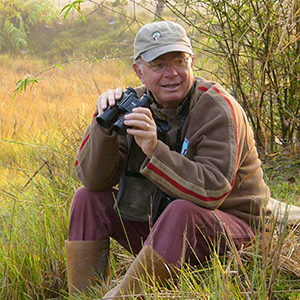
Dr. George Archibald
Co-Founder and Senior Conservationist
International Crane Foundation
Celebrating Cranes at Festivals in Bhutan and Mongolia
International Crane Foundation Co-Founder George Archibald has been a driving force behind the creation of crane celebration festivals across the globe. Every November, thousands of Bhutanese locals travel to Bhutan’s Gangtey Goemba Monastery to celebrate the arrival of Black-necked cranes. In Mongolia, hundreds of people flock to the Binder Crane Festival in Khentii province to celebrate White-naped Cranes. Join George as he recounts the stories of how these festivals began and the amazing events that make these celebrations unique.
The future of many crane species was once as fragile as the delicate and graceful birds themselves. George Archibald’s visionary leadership in international conservation efforts over the past 50 years has given flight to crane conservation worldwide. In 1973, when cranes were in a perilous situation, and many were on the brink of extinction, Archibald and Cornell University colleague Ronald Sauey, Ph.D., established the International Crane Foundation in Baraboo, Wisconsin, as the world center for the study and preservation of cranes. Archibald is a true conservation ambassador who uses his unique brand of crane diplomacy to work in sensitive places. He leverages the charisma of cranes to unite people from diverse cultures and countries to work together to preserve the landscapes necessary for the survival of both cranes and people.
Born in New Glasgow, Nova Scotia, Canada, Archibald received his undergraduate degree from Dalhousie University in Halifax, Nova Scotia, in 1968 and completed his Ph.D. at Cornell University in 1977. In recognition of his many accomplishments, Archibald has received four honorary doctorates and many awards, including the Gold Medal from the World Wildlife Fund, a Fellows Award from the MacArthur Foundation, The Wildlife Conservation Medal from the Zoological Society of San Diego, the Lilly Medal presented by the Indianapolis Zoo, and the Douglas H. Pimlott Award from Nature Canada. In 2013, Archibald was awarded the Order of Canada on behalf of Queen Elizabeth II and received the inaugural Dan W. Lufkin Prize for Environmental Leadership from the National Audubon Society. George lives in the Baraboo countryside, where he enjoys gardening and aviculture.

Michael Forsberg
Photographer and Conservationist
Writing With Light – A Photography Workshop With Michael Forsberg
Join award-winning conservation photographer Michael Forsberg for a two-hour nature photography workshop. This workshop can help improve your photography while you explore the quality of light, helpful tools for composition, and how to tell a story through your photos. The first hour of this workshop will be indoors, and the second hour will take place outdoors (weather permitting). Whether you take photos on your phone or with a fancy camera, this class is open to everyone.
Michael Forsberg is a Nebraskan whose 30-year career as a photographer and conservationist has been dedicated to wildlife and conservation stories in North America’s Great Plains, once one of the greatest grassland ecosystems on Earth. His images have been featured in publications including Audubon, National Geographic, Nature Conservancy and Sierra magazines. His fine art prints are in public and private collections, and his solo exhibitions have traveled nationwide. Mike serves as faculty with the University of Nebraska–Lincoln and is a Fellow with the Center for Great Plains Studies and the Daugherty Water for Food Institute. He is also a Senior Fellow with the International League of Conservation Photographers. He lives in Lincoln, Nebraska, with his family and a collection of unruly animals.
Mike is the author and photographer of On Ancient Wings – The Sandhill Cranes of North America, self-published in 2005, and Great Plains – America’s Lingering Wild, published by the University of Chicago Press in 2009. He was featured in the Nebraska Public Media documentary Crane Song and co-produced Great Plains – America’s Lingering Wild, based on his book of the same title, released on PBS in 2013. In 2011, Mike co-founded Platte Basin Timelapse in partnership with the University of Nebraska–Lincoln and Michael Farrell Photography and Fine Art. Today it operates as a conservation storytelling project to inform scientific research, build education content, and tell stories of a Great Plains watershed in motion.
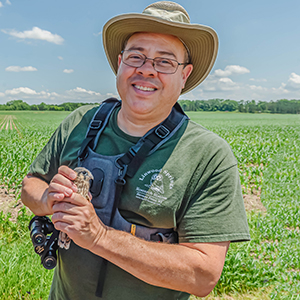
Dr. Jeff Galligan
Co-Founder
BIPOC Birding Club of Wisconsin
Birding is for Everyone – A Look Into the BIPOC Birding Club of Wisconsin
Join BIPOC Birding Club of Wisconsin Co-Founder Dr. Jeff Galligan for this engaging and educational session on how you can help make your local birding community more welcome for all birders. Dr. Galligan will discuss what his club – as a community of People of Color and Allies – is doing to increase diversity and access to the birding community, and how they are addressing issues of equity in Wisconsin. Dr. Galligan will recount stories from his time founding the club, the club’s events, and present tips on how to make birding events more inclusive.
Dr. Jeff Galligan is the co-founder of the BIPOC Birding Club of Wisconsin. This club seeks to create safe spaces for people of color in the outdoors through outdoor birding activities and experiences. It is his dream to inspire kids of color and to provide STEM-related opportunities for them. Dr. Galligan also serves as the secretary of the Badgerland Bird Alliance board of directors and is a past member of the Aldo Leopold Nature Center board of directors. He also serves on the Bird City Wisconsin Steering Committee, teaches Birding 101 for Madison Audubon, and is a Wisconsin Master Naturalist. When he is not involved in all things birds, Galligan is an administrator at Madison College where he is the director of the TRIO Student Support Services program and first-generation initiatives.

Dr. Barry Hartup
Research Associate in Conservation Medicine
International Crane Foundation
The Health of Cranes – Avian Medicine in Conservation
How do you safely capture an endangered Whooping Crane in a salt marsh? How do you know when a bird — let alone a large one such as a crane — is not feeling well? Dr. Hartup will show how he has conducted his work for over 20 years with the International Crane Foundation in Baraboo, Wisconsin, and with partners abroad.
Dr. Barry Hartup was the International Crane Foundation’s Director of Conservation Medicine from 2000-2023 and is now a Research Associate in Conservation Medicine with the Foundation. He is the chair of the Whooping Crane Health Advisory Team, chair of the Wildlife Health Committee of the IUCN Crane Specialist Group, and an Emeritus Clinical Instructor in Zoological Medicine at the School of Veterinary Medicine, University of Wisconsin-Madison. Working with International Crane Foundation helped to fulfill his professional interests in veterinary medicine, animal population health and epidemiology, and the conservation of endangered species. Barry also enjoyed mentoring dozens of students and trainees in the art and science of crane medicine. Barry earned an M.S. degree in Conservation Biology and a Doctor of Veterinary Medicine degree from the University of Wisconsin-Madison, and a Ph.D. in Wildlife Health from Cornell University.
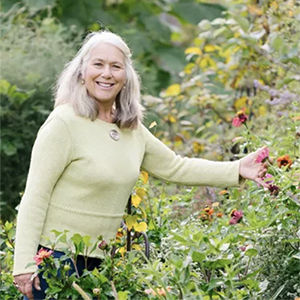
Jane Hawley Stevens
Four Elements Organic Herbals
Trusting the Traditional Remedies of Sauk County
Join Jane Hawley Stevens to explore the possibilities that native plants contain biochemical compounds designed to work with living bodies to improve health and well-being.
Often dismissed as folklore, herbal remedies were traditional in every culture. If you trust only science, examples of how these pharmacological storehouses support and interact with our biology will be provided. Most fun and exciting, you will learn how common and rare native plants can help improve your well-being every day. Ethical harvesting techniques will be featured. See how a sustainable Sauk County farm cultivates Leopold’s land ethic in the 21st century.
Jane Hawley Stevens began specializing in herbs in 1981 after earning a degree in horticulture from the University of Wisconsin-Madison. In 1987, she founded Four Elements Organic Herbals, based on plants grown on her and David’s certified organic farm in Freedom Township.
Jane and David were awarded the 2020 Organic Farmers of the Year for their stewardship, innovation and willingness to open up their farm and knowledge base, promoting the organic farming movement.
A pioneer of the organic farming and natural products communities, Jane inspires others by living her truth, bringing herbal wellness to the marketplace and teaching herbalism and organic farming methods throughout the country. Her first book, The Celestial Garden, Growing Herbs, Vegetables, and Flowers in Sync with the Moon and Zodiac, offers a deeper level of connection to that which sustains us. Learning about how farming relates to astrological cycles can help restore our elemental interconnection with Nature and the Earth.
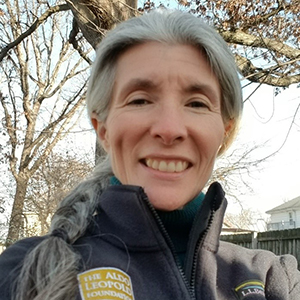
Susan Kilmer
Development Manager
Aldo Leopold Foundation
Nature Journaling
With a focus on the science of phenology, nature journaling can provide an enjoyable way to mark your days and understand the natural world around you. Following in the footsteps of Aldo Leopold and the Leopold family, we’ll briefly trace the history of Leopold’s phenological record-keeping and discover the many ways you can record your own. Susan Kilmer, Development Manager at the Aldo Leopold Foundation, has provided workshops on nature journaling and native seed collecting and identification at the UW-Madison Arboretum and Olbrich Botanical Gardens.
Joining the Leopold team as the Development Manager in 2022, I’m thrilled to bring my nearly 15 years of nonprofit and Development experience to the team. My role is to help you support the Aldo Leopold Foundation, whether you wish to build our Future Leaders Program, restore land health or preserve the Shack for future generations.
My multi-branched path to the Aldo Leopold Foundation began by growing up in the Hudson River Valley near the Catskill Mountains of New York. I’ve had a love for nature and all things wild since childhood and began working as a teenager at Olana, a New York State Historic Site.
Prior to joining the Aldo Leopold Foundation, my positions included Development Director for Community Shares of Wisconsin, Member Services Assistant at the Wisconsin Wetlands Association, Senior Research Specialist/Staff Horticulturist at the UW-Madison Arboretum, and Development Assistant at Olbrich Botanical Society. In my role at the Arboretum, I was able to live Leopold’s land ethic because my position focused on growing native species and engaging volunteers, visitors and students in land restoration through seed collecting and planting for 13 years.

Dr. Patty Loew
Medill School of Journalism Professor
Northwestern University
Ajijaak: Ojibwe Lessons from the Crane
Dr. Patty Loew, Mashkiiziibii Ojibwe (Bad River Band), talks about her community’s relationship with two cherished relatives – Ajijaak the Sandhill Crane and manoomin or wild rice – and shares Ojibwe teachings learned from them.
As a professor in the Medill School of Journalism at Northwestern University, Patty teaches Native American Environmental Issues and the Media and journalism history to undergraduates and leads a “Medill Explores” course for graduate students. Patty recently retired as director of Northwestern’s Center for Native American and Indigenous Research.
Since 2006, Patty has led the Tribal Youth Media initiative, a digital media project that seeks to help create the next generation of Native American storytellers and land stewards.
Patty is a celebrated author of numerous journal publications and books, including “Seventh Generation Earth Ethics, Native Voices of Wisconsin.”
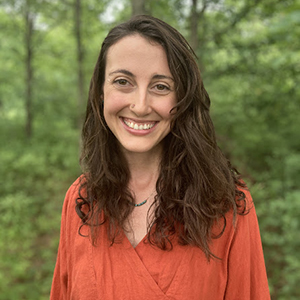
Maia Persche
SILVIS LAB Ph.D. Student
University of Wisconsin-Madison
The Ecology of Oak Woodland Restoration
Woodland restoration offers an important opportunity for ensuring the persistence of native Wisconsin biodiversity. However, understanding how open woodland management treatments, such as prescribed fire and tree thinning, affect forest species can be challenging. In this talk, Maia Persche will describe a muti-trophic field study in the Baraboo Hills (Sauk Co., Wisconsin) aimed at understanding the effects of oak woodland management on understory microclimates, plant communities, forest arthropods, insectivorous birds, and even woodland soundscapes. Results from three field seasons indicate that woodland restoration can play an important role in bird conservation in southern Wisconsin.
Maia Persche is a field biologist who is interested in studying the effectiveness of biodiversity conservation strategies. Most of her research relates to avian ecology. She has been a bird bander since 2016, working in the southern Appalachian Mountains, Ecuador, Argentina and the midwestern United States. She is currently a Ph.D. student in the SILVIS Lab at the University of Wisconsin-Madison, and her research is centered on the response of biodiversity to woodland habitat restoration. She has been exploring the Baraboo Hills since she could walk and began studying songbirds in 2009. In 2021 she started the Baraboo Hills Research Collective, a series of long-term ecological monitoring and bird banding stations across the south range of the Baraboo Hills.
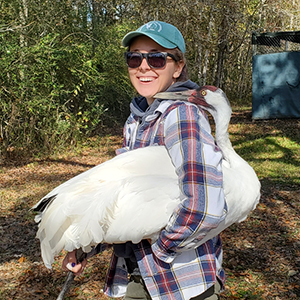
Stephanie Schmidt
Whooping Crane Outreach Coordinator
International Crane Foundation
Whooping Cranes in the Eastern Migratory Population
Whooping Cranes, once native across North America, faced near extinction in the 1940s due to increased threats from habitat loss, hunting and more. It wasn’t until 2001 that Whooping Cranes returned to the eastern United States following a collaborative reintroduction program led by the International Crane Foundation and partners. Today, there are around 76 Whooping Cranes in this population, most of which breed in central Wisconsin each year.
Please join Stephanie Schmidt, Whooping Crane Outreach Coordinator for the International Crane Foundation, to learn about the Whooping Crane Eastern Migratory Population and the work the Foundation and partners are doing to safeguard the species’ future. Following this presentation, you will be able to identify Whooping Cranes by sight and sound, understand the historic threats that led to the species’ decline, learn more about the reintroduction program and the current work to protect Whooping Cranes in Wisconsin and throughout their flyways, and discover how you can be an ambassador for cranes in Wisconsin.
Stephanie Schmidt is the Whooping Crane Outreach Coordinator for the International Crane Foundation. Stephanie grew up in the Kettle Moraine area in southeastern Wisconsin, a region that is known for its many Sandhill Cranes and ignited her early love for birds, wetlands and nature. She attended the University of Wisconsin-Madison to earn her bachelor’s degree in Zoology and Environmental Studies in 2018, and in 2022 she earned her master’s degree in Natural Resources and Environmental Sciences at the University of Illinois at Urbana-Champaign.
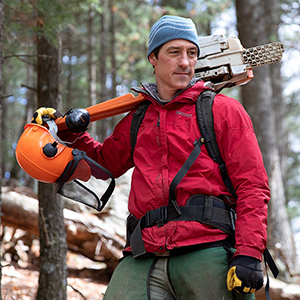
Dr. Jed Meunier
Ecologist and Research Scientist
Wisconsin Department of Natural Resources
Fire Ecology of Wisconsin and Leopold’s Leadership
Fire performs an incredibly important role in our natural landscapes and largely has a negative connotation in our culture today. Learn about the history of prescribed fire in the Midwest and Aldo Leopold’s role in bringing fire ecology back into the limelight.
Jed Meunier is an ecologist and research scientist with the Wisconsin Department of Natural Resources, focusing on forest and fire ecology. His dissertation research was on fire ecology in northern Mexico and aimed at guiding forest management and restoration in northern Mexico and the U.S. southwest, very much in line with what Aldo Leopold had himself promoted seven decades prior.
Jed received his M.S. in the Wildlife Ecology Department at the University of Wisconsin-Madison, a Department Leopold started in 1933, where he studied the effects of hunting on declining American Woodcock populations. Jed has not lacked sources for inspiration; his mentors and role models include his grandmother, Nina Leopold Bradley, and her siblings. Jed’s course, personally and academically, is very much entwined with the mission and legacy of his family and the Aldo Leopold Foundation.
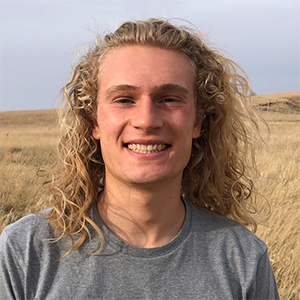
Max Sorenson
Visiting Artist and Program Associate
Aldo Leopold Foundation
Barn Quilts, Leopold and Our Rural Plant Communities
Join us for a discussion of the contemporary barn quilt movement, Leopold’s land aesthetic, and our relationship to plants in rural places. And leave this hands-on workshop with a small-scale, plant-inspired, cut-paper barn quilt!
I grew up on the fringe of the Northwoods of Wisconsin, the son of a forester and a mother who grew up in a remote farmhouse in the Driftless region of Southwestern Wisconsin. The influences of my parents, and my own fascination with the natural world, brought me outdoors throughout my childhood and continue to drive an interest in ecological conservation.
This past year, as a Land Stewardship Fellow with the Aldo Leopold Foundation, I built an attentive and caring relationship with this historic landscape and its human and nonhuman community. This bond, born of work, time and love, is the place from which I can begin to learn and contemplate how we, as members of local and global communities, can forge sustainable relationships with the land full of attention, care and reverence. In my new role as a Visiting Artist and Program Associate, I will continue to nurture my own relationship with the Land through further stewardship and artistic research, interacting in varied ways with the flora of this area to carefully and intentionally expand my, and our, web of attention.
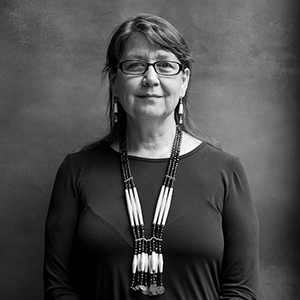
Melanie Tallmadge Sainz
Founding Director
Little Eagle Arts Foundation
Mąą Wakącąk: Visual Connections to Sacred Land
Melanie Tallmadge Sainz was born in Baraboo and raised in the Wisconsin Dells area. Her roots in the cultural tourism of the 1960s – 80s helped to shape her into a cultural arts educator and advocate for authentic Native arts. After a successful career in Native museums and exhibitions, education, and social justice activism in the desert Southwest, Melanie now blends her passion for creative community building and art making in her Ho-Chunk homeland of south-central Wisconsin. In this presentation, you will explore a true American art form, porcupine quill embroidery. Learn the sustainable practice of working with quills and other indigenous fibers, and witness how Melanie uses these materials to act as vehicles of social commentary within her Endangered Wildflowers pouch series and Hero/She-ro portrait series. Explore a place named Maa Wakacak (Ho-Chunk place name, English translation: Sacred Land) and see the effect of its inspirational spirit of reconciliation on Melanie’s recent public art installations.
Melanie Tallmadge Sainz is a member of the Ho-Chunk Nation of Wisconsin and has been an exhibiting artist, art educator, and arts organization administrator since 1985. Melanie received a certificate in Minority Business at UW-Madison and her B.F.A. and M.A. graduate studies in Art Education at Arizona State University. She held the positions of the Education Specialist at The Heard Museum in Phoenix, Arizona, Art Department Chair at Phoenix Country Day School in Paradise Valley, Arizona, and currently the founding Director of Little Eagle Arts Foundation, a Native-run non-profit organization dedicated to the economic betterment of Native artists in the western Great Lakes region.
Her art has received awards and has been exhibited and sold at the Shirotopia in Himeji, Japan; Southern Highland Craft Guild Folk Art Center in Asheville, North Carolina; Smithsonian Museum of the American Indian in Washington DC; the Eiteljorg Museum of American Indian and Western Art in Indianapolis, Indiana; the Heard Museum in Phoenix, Arizona; and the Autry Museum in Los Angeles, California. Her recent public art installations in Wisconsin include Earth Sky Water, Great Sauk State Trail, Prairie du Sac; Tee Wakacak: Sacred Lake, Jack Young Middle School, Baraboo; CUNA Mutual Insurance building, Madison; International Crane Foundation, Baraboo; and Wingra School, Madison.
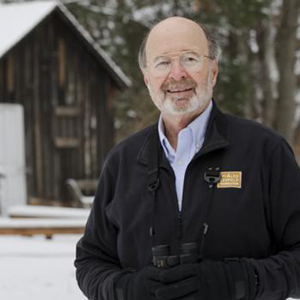
Dr. Stan Temple
Senior Fellow
Aldo Leopold Foundation
The Migratory Bird Treaty Act, Then and Now – Is It Still Working?
In 2016, we marked the centenary of the “Convention between the United States and Great Britain (for Canada) for the Protection of Migratory Birds” (better known as the Migratory Bird Treaty). The 1916 treaty became the cornerstone of our national commitment to conserve birds. The Migratory Bird Treaty Act of 1918 implements the landmark 1916 treaty, and together the treaty and act form one of the world’s oldest and most enduring bird conservation measures. They have been responsible for the spectacular recoveries of many species, like the Sandhill Crane.
But threats to migratory birds today challenge the effectiveness of these milestones. Loss and degradation of habitat, collisions with human-made structures, cat predation, pesticide poisoning, and oil spills cause the deaths of hundreds of millions of migratory birds each year. Are these century-old actions up to the task of protecting birds against 21st-century threats? Professor Stan Temple will recount the first century of migratory bird protection and speculate about the future.
Stan Temple is a world-renowned ornithologist, emeritus professor of wildlife ecology at UW-Madison and Senior Fellow with the Aldo Leopold Foundation. From 1976 to 2008, Stan was the Beers-Bascom Professor in Conservation in the Department of Wildlife Ecology at UW-Madison, the same position first held by Aldo Leopold.
Teaching and following in Aldo’s footsteps have allowed Stan to promote his land ethic and conservation ideas in 21 countries where he has helped save some of the world’s rarest and most endangered bird species. For this and other contributions to the field of conservation, Stan has received national and international recognition. Among many other conservation activities, Stan has served as president of the Society for Conservation Biology and chairman of the Wisconsin Chapter of the Nature Conservancy. Stan has also authored more than 330 publications on conservation and ecology.